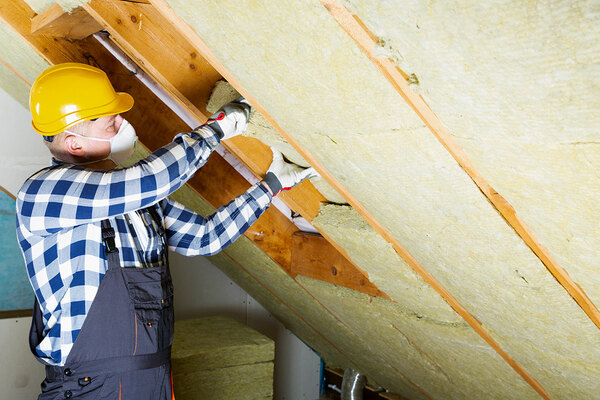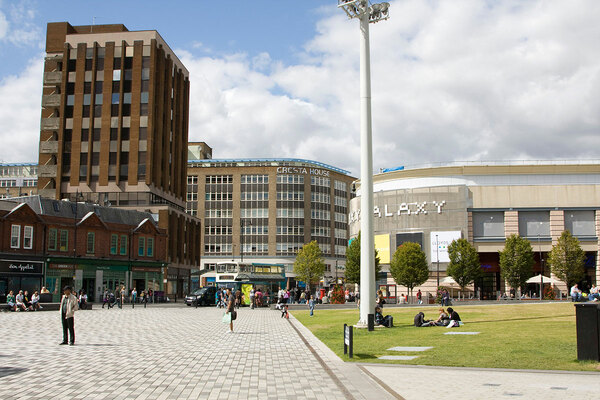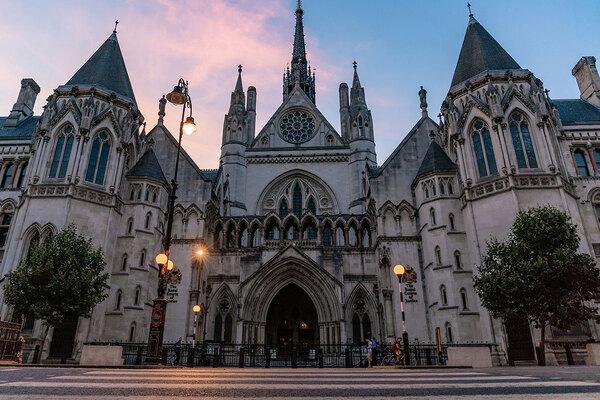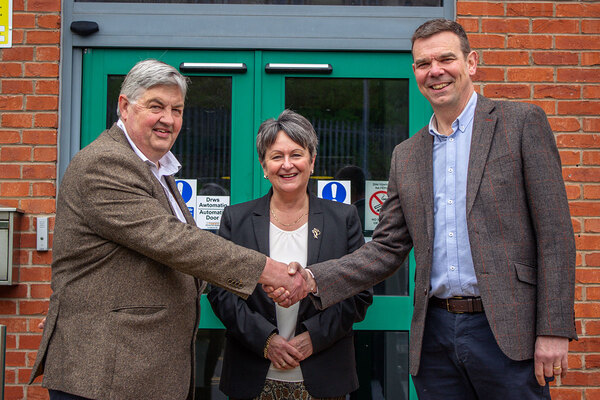You are viewing 1 of your 1 free articles
Procuring a sustainable future: how the climate crisis should drive procurement strategies
Social landlords should be balancing cost and environmental impact when procuring for services, but how is this working in practice? Peter Apps finds out. Illustration by Carlos Coelho
Back in 2012, a local authority in London decided it wanted to improve the thermal efficiency of one of several 1970s concrete tower blocks it owned.
The plan was for a refurbishment that upgraded the communal heating system, fitted new windows and installed a new insulation system onto the external walls.
The council set out to procure a contractor to carry out this work. Budgets were tight and cost was made a priority. “Value for money is to be regarded as the key driver [of] the project,” a member of the team wrote. A procurement process was set up, with the bid to be assessed 55% on quality and 34% on cost. Three contractors submitted bids. They priced the job at £9.2m, £9.9m and £10.4m. The £9.2m bid was the runaway winner.
It was later alleged that behind-the-scenes conversations had taken place between this bidder and the council’s managing agent, resulting in an agreement to reduce their initial planned bid by £800,000.
As the work began, cost was stripped out. Zinc cladding – which had been selected by residents in a consultation – was swapped for a cheaper option, saving around £300,000.
“Value for money is to be regarded as the key driver [of] the project”
But the council also wanted to obtain grants through green funding – so it set requirements for the insulation performance, despite the cost-cutting. Consultants suggested a plastic material that had a high thermal performance, was thin enough to fit in the design and was cost-effective compared to alternatives. It had a poor fire performance, but little thought was given to this.
Perhaps by now you have figured out which refurbishment project is being described. The council was the Royal Borough of Kensington and Chelsea, the managing agent was Kensington and Chelsea Tenant Management Organisation, the contractor was Rydon and the building was Grenfell Tower.
The above description is sourced largely from the description given by the barrister representing the survivors at the start of the inquiry’s second phase. The process is ongoing and some of the details may be challenged, or further explained.
But what is certainly clear is that the refurbishment of Grenfell was, on one level, an effort to make an old building more sustainable. And – with the emphasis placed far too strongly on cost – it went desperately wrong. Now, three years on from Grenfell, sustainability is once more at the top of the sector’s to-do list. First, and most obviously, the sector is in the early stages of spending billions to help the country decarbonise by 2050.
This means the retrofit of existing homes to make them more energy efficient and it means working to ensure the new homes we build are fit for the future. It also means collectively buying millions of environmentally friendly replacements for gas boilers, millions of electric car charging points and millions of solar panels. This will require a gigantic procurement effort.
But sustainability in procurement reaches beyond that and should affect every procurement exercise a housing business carries out. There is not much point making your business green if you continue to buy from those that are not.
So how should the sector’s procurement teams address this – and avoid the mistakes of the past? The first point to emphasise is that social landlords do have the power to take environmental factors into account when assessing a bid, although they may not always realise this.
“I think there has been a reticence for a long time,” says Rebecca Rees, a partner at Trowers & Hamlins. “Thanks to some EU case law, people were very wary about taking things into account that could be seen as ‘secondary considerations’.”
New regulations in 2015 cleared up any doubt. “The 2015 regulations make it very clear that part of the evaluation criteria can be around environmental issues and there’s no restriction on how much weight you put on it,” explains Kris Kelliher, a partner at law firm Devonshires.
“I think sustainability and climate issues are going to be procurement priorities going forward, and therefore you need to structure procurement processes that are going to focus on that”
The question is: do housing associations use this power enough? Here we reach a typical tension in procurement – one which bedevilled the Grenfell project: the tension between cost and quality.
“There is often a trade-off between price and environmental performance,” says John Skivington, group director at not-for-profit framework provider LHC. “Back in 2006, sustainable procurement was really big, but after the recession everyone focused back on cost and value for money.”
The tide has begun turning on this point, particularly after Grenfell and Dame Judith Hackitt’s specific criticism of a “race to the bottom” in procurement in her assessment of what went wrong. But price is still a major factor in procurement.
As Mr Kelliher explains, price often remains the determinative factor even if bids are weighted more towards quality. “It’s quite rare to see [price] at any less than 40% [of an evaluation criteria],” he explains. “Lowest cost usually gets full marks in this category, but for quality most bids are usually there or thereabouts. That means in practice the lowest-priced bidder is going to have a good chance of winning.”
“Back in 2006, sustainable procurement was really big, but after the recession everyone focused back on cost and value for money”
This is a problem that holds back sustainability agendas. Take modern methods of construction (MMC). Despite often being greener and higher quality, they will rarely beat traditional building methods on a straightforward assessment of cost – which means MMC builders will keep losing out on the big tenders. A procurement strategy that took greater account of sustainability may address this.
One way around this issue may be to assess the cost not simply as the money spent up front, but the whole life cycle of the project. A home may cost more to build but last longer and be cheaper to maintain.
“You might spend more on upfront costs but deliver homes that will save money in the long term,” says Mr Skivington. But this requires more sophisticated ways of calculating cost. “It’s difficult and a lot of work needs to be done to properly provide the data – we’re not quite there as a sector,” he adds.
Another factor is that procurement teams do not necessarily have the expertise in house to procure sustainably.
The procurement team are experts in procurement not in sustainability, explains Mr Kelliher, and this expertise needs to be built up elsewhere in the business and then communicated. “Getting the specification right from a technical perspective can be complex,” he says. “You need to have the right people in the organisation who can stipulate exactly what they need from the contract.”
This expertise needs to be built up elsewhere inside the business – and there is a good case for collaboration across the sector. Most existing frameworks are for routine work – they do not necessarily cater specifically for retrofit needs. The sector needs contractors to do billions of pounds of work in this area – it could do with joining forces to find them.
Climate emergency declarations: what it means for housing
Councils across the UK are declaring a climate emergency. So what does this mean for their policies and procurement processes? Peter Apps finds out.
One other potential change is to turn the process on its head a little and procure based on outcomes rather than a specific project. So rather than simply trying to buy solar panels, social landlords could try simply to procure for work to make their stock more energy efficient – inviting a wider spectrum of bids. “The most important thing is to be clear about the outcome of procurement, then engage with the market intelligently and get the best result,” says Mr Skivington.
Finally, there is also an obligation to look further down the chain than the lead contractor. What is the point in finding a bidder who has excellent green credentials, but who then subcontracts to someone who throws their waste in the local canal?
This is what procurement experts call ‘Scope 3’. If Scope 1 is how sustainable your business is and Scope 2 is your contractors’ business, Scope 3 is the wider web of companies and providers your contractor buys from. Testing this is tough, but it is important if you want policies to be genuinely meaningful.
This challenge is not going away. If the country is serious about being zero carbon by 2050, the clock is ticking. “I think sustainability and climate issues are going to be procurement priorities going forward, and therefore you need to structure procurement processes that are going to focus on that,” says Ms Rees.
It is also something the sector should take seriously. The climate emergency matters and all businesses with a social purpose have an obligation to take action.
With procurement teams under pressure to arrange the mountains of post-Grenfell fire safety remediation work, transformation is not easy. But perhaps this work to make unsafe buildings safe only serves to underscore the importance – and value – in getting it right first time.
Sign up for Inside Housing’s weekly Grenfell Inquiry newsletter
Each week our sister publication Inside Housing sends out a newsletter rounding up the key news from the Grenfell Inquiry, along with exclusive analysis of what it all means for the social housing sector.
Already have an account? Click here to manage your newsletters















